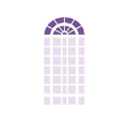Science
Science takes place on Thursday afternoon with Mrs Probert.
Autumn Term 2020
During this term we learn about ‘Living Things and their Habitats’.

We learn to:
- recognise that living things can be grouped in a variety of ways
- explore and use classification keys to help group, identify and name a variety of living things in our local and wider environment
- recognise that environments can change and that this can sometimes pose dangers to living things
Click here for some fun activities which are linked to this topic:
During this term, we also study 'Solids, Liquids and Gases'.

We learn to:
- compare and group materials together, according to whether they are solids, liquids or gases
- observe that some materials change state when they are heated or cooled, and measure or research the temperature at which this happens in degrees Celsius (°C)
- identify the part played by evaporation and condensation in the water cycle and associate the rate of evaporation with temperature
Click here for some fun activities which are linked to this topic:
What are the states of matter?
What are melting and freezing?
What is evaporation and condensation?
Spring Term 2021
During this term, we learn about ‘Teeth, Digestion and Food Chains’.

We learn to:
- describe the simple functions of the basic parts of the digestive system in humans
- identify the different types of teeth in humans and their simple functions
- construct and interpret a variety of food chains, identifying producers, predators and prey
Click here for some fun activities which are linked to this topic:
Why do animals have different teeth?
Summer Term 2021
During this term, we learn about ‘Sound’.

We learn to:
- identify how sounds are made, associating some of them with something vibrating
- recognise that vibrations from sounds travel through a medium to the ear
- find patterns between the pitch of a sound and features of the object that produced it
- find patterns between the volume of a sound and the strength of the vibrations that produced it.
- recognise that sounds get fainter as the distance from the sound source increases
Click here for some fun activities which are linked to this topic:
What is the volume of a sound?
During this term, we also study ‘Electricity’.

We learn to:
- identify common appliances that run on electricity
- construct a simple series electrical circuit, identifying and naming its basic parts, including cells, wires, bulbs, switches and buzzers
- identify whether or not a lamp will light in a simple series circuit, based on whether or not the lamp is part of a complete loop with a battery
- recognise that a switch opens and closes a circuit and associate this with whether or not a lamp lights in a simple series circuit
- recognise some common conductors and insulators, and associate metals with being good conductors
Click here for some fun activities which are linked to this topic:
What are conductors and insulators?
Here are some examples of our work this year.























